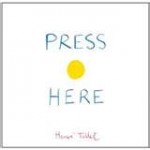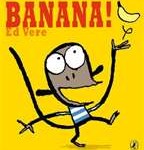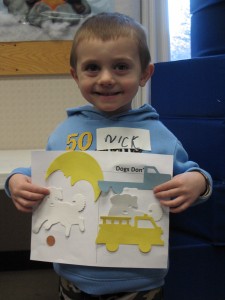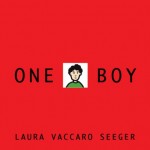 My dear friend’s daughter, Nora, turned one this month, and as a librarian, writer, and ardent-bordering-on-obsessive fan of children’s literature, I felt it my duty to include a book in her birthday bag o’ swag. Which book to choose? Press Here by Herve Tullet. Deceptively simple, it consists of dots and directions on what to do with them. Press the yellow dot and turn the page. Now there are two dots. Press the yellow dot again, and on the next page, now there are three dots. Tilt the book to the left, and on the next page, the dots seem to have slid to the left edge. Clap your hands to make the dots big, bigger, bigger. It is what electronic books wish they could be: it is interactive, delightful, and requires no batteries.
My dear friend’s daughter, Nora, turned one this month, and as a librarian, writer, and ardent-bordering-on-obsessive fan of children’s literature, I felt it my duty to include a book in her birthday bag o’ swag. Which book to choose? Press Here by Herve Tullet. Deceptively simple, it consists of dots and directions on what to do with them. Press the yellow dot and turn the page. Now there are two dots. Press the yellow dot again, and on the next page, now there are three dots. Tilt the book to the left, and on the next page, the dots seem to have slid to the left edge. Clap your hands to make the dots big, bigger, bigger. It is what electronic books wish they could be: it is interactive, delightful, and requires no batteries.
Considering that I had to pry Press Here from the hands of my 12- and 10-year-old children to put it in Nora’s gift bag, I can honestly say it’s not just for the littlest ones. My kids are no strangers to electronic games and they logically understand the way paper books work, but both of them followed all the instructions on the pages, like shaking the book to make the dots “move”. For toddlers, this book is magical. For kids who are building their reading skills, the simple text is engaging enough to read again, again, again. Press Here and see what happens!



